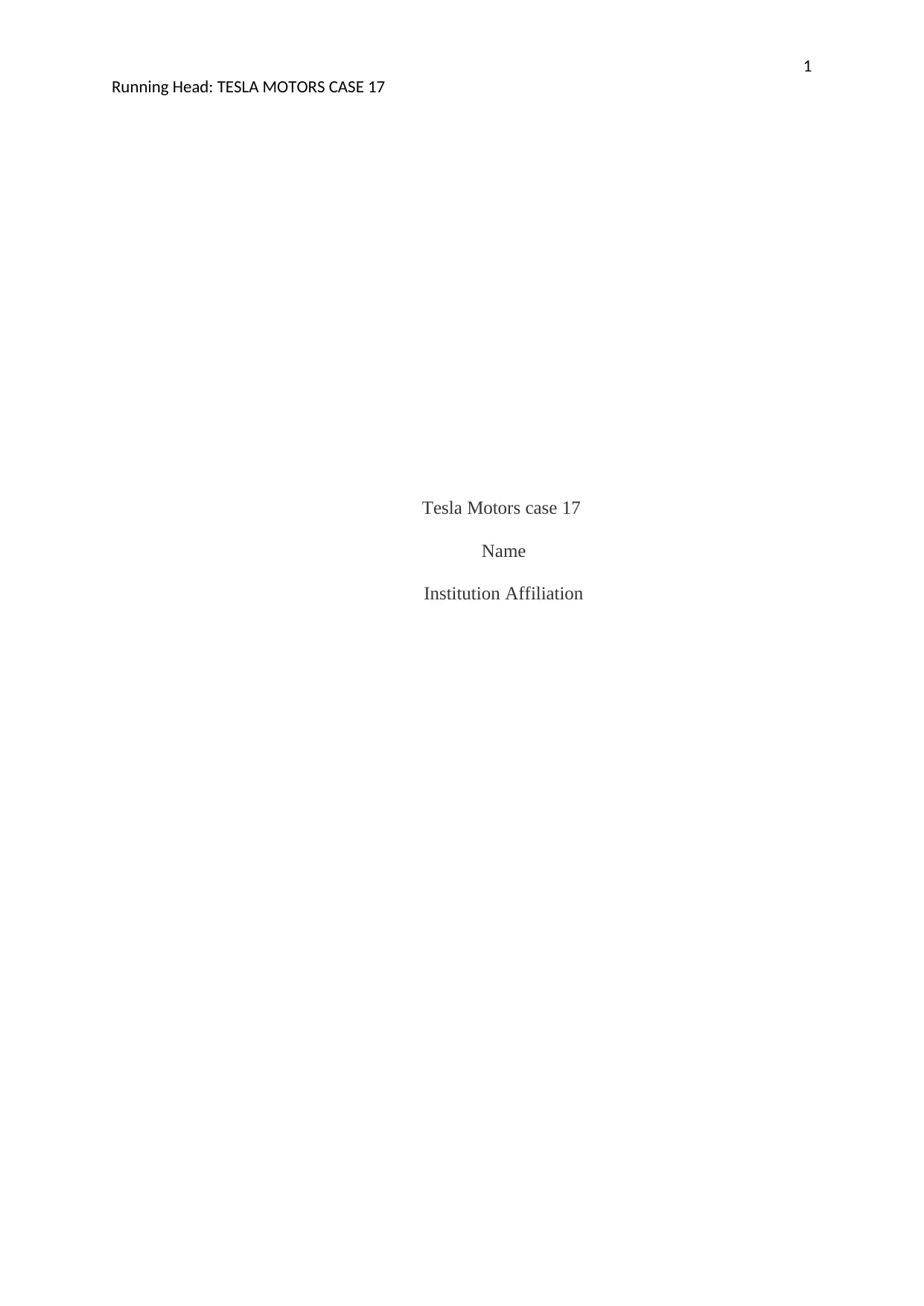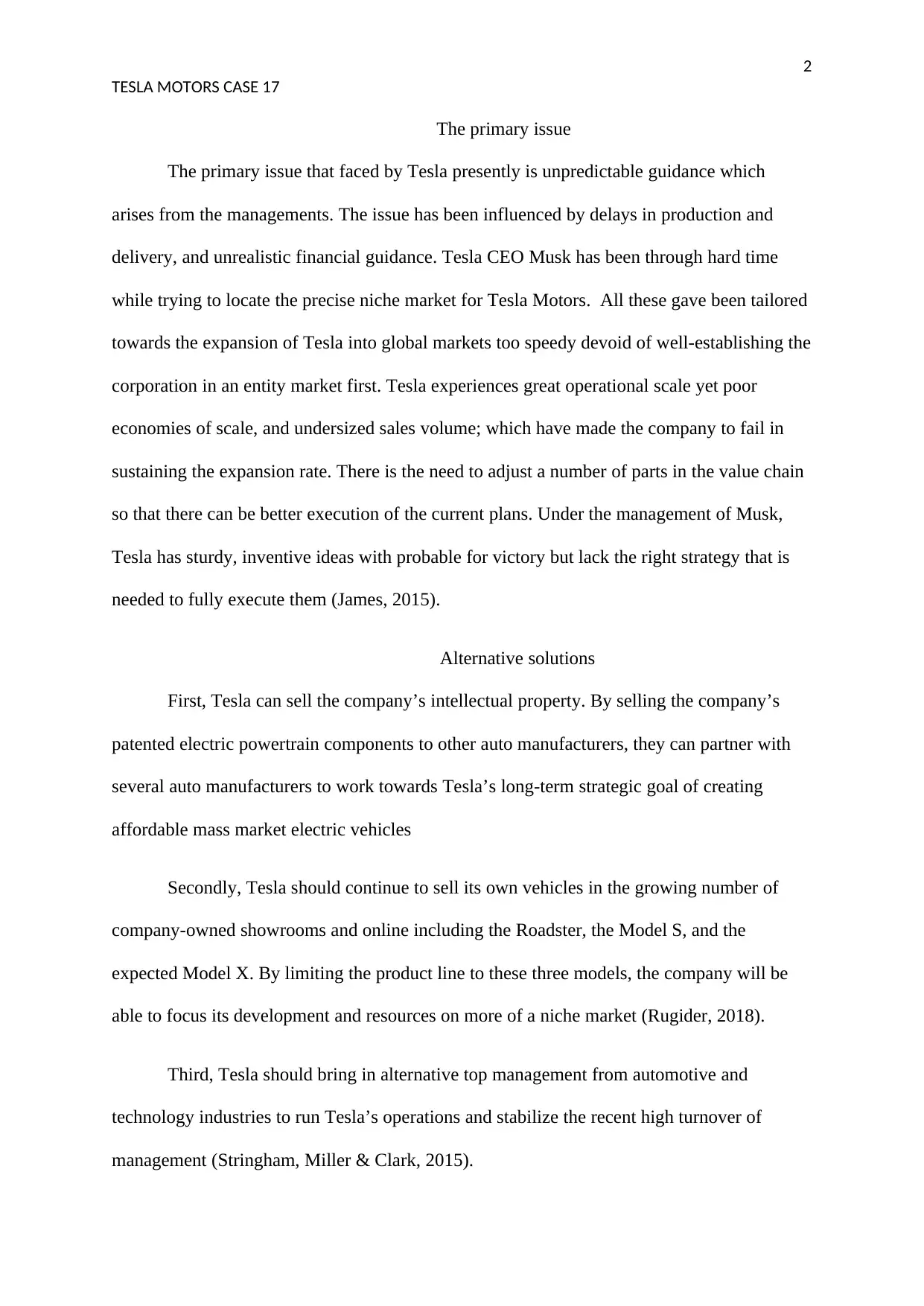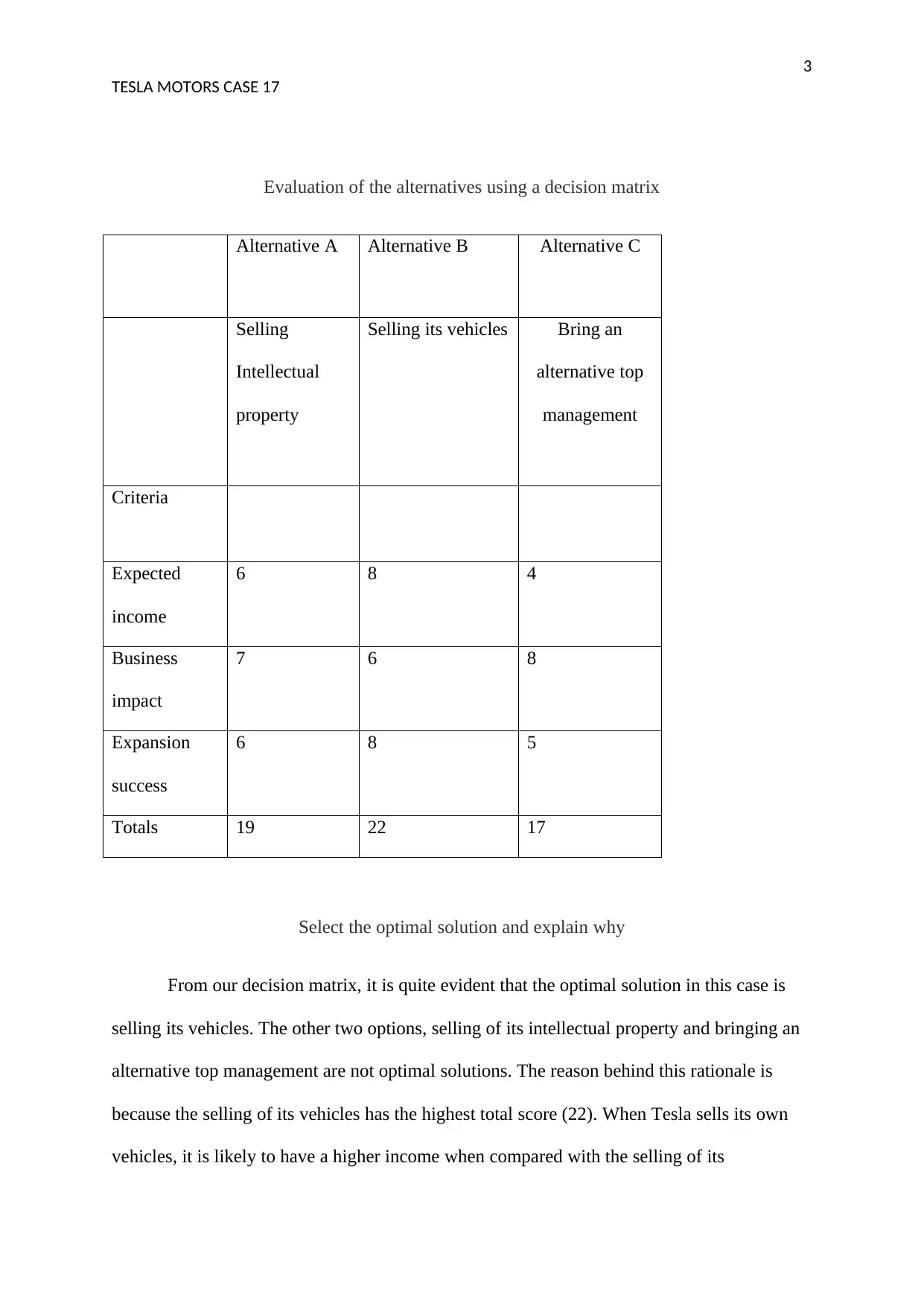University Case Study: Tesla Motors - Strategic Solutions Analysis
VerifiedAdded on 2021/05/31
|5
|870
|155
Case Study
AI Summary
This case study analyzes the challenges faced by Tesla Motors, primarily stemming from unpredictable management guidance, production delays, and unrealistic financial projections. The analysis identifies the core issue as the difficulty in finding the right niche market and rapid global expansion without establishing a strong foothold in an entity market first. The paper evaluates alternative solutions, including selling intellectual property, focusing on vehicle sales, and bringing in new management, using a decision matrix to determine the optimal solution. The study recommends that Tesla focus on selling its own vehicles, as it has the highest potential for success. An implementation plan is developed, emphasizing the importance of brand awareness through advertising, battery technology, and targeting environmentally conscious consumers. The case study concludes by highlighting Tesla's mission of increasing electric car availability and the importance of maintaining a competitive edge in the electric vehicle market. The paper references multiple sources to support the analysis and recommendations.
1 out of 5












![[object Object]](/_next/static/media/star-bottom.7253800d.svg)